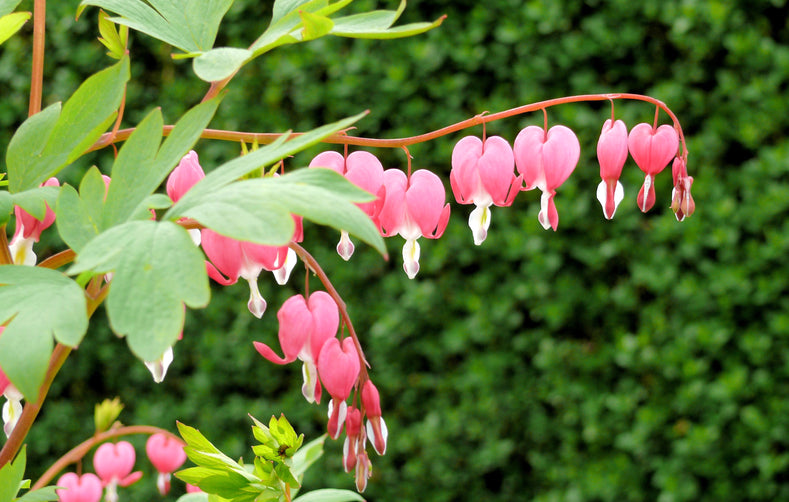Planting Bleeding Hearts (Dicentra spectabilis) adds a touch of romantic whimsy to your garden with their iconic, heart-shaped flowers. Here’s a comprehensive guide to get these charming perennials thriving in your space:
1. Best Time to Plant: Spring or fall are ideal times
2. Location: Select a spot that receives partial to full shade. Morning sun with afternoon shade is perfect, especially in warmer climates.
3. Soil Needs: Bleeding Hearts prefer rich, moist, and well-draining soil. They thrive in a slightly acidic to neutral pH.
4. Improving Soil: Work in plenty of organic matter like compost or well-rotted manure to enhance soil fertility and drainage.
5. Spacing: Plant them 18-24 inches apart to give them room to grow.
6. Depth: Set the roots so the crown (where the roots meet the stem) is about 1 inch below the soil surface. Be careful not to plant too deep.
7. Watering After Planting: Give them a good soak to settle the soil around the roots. Ongoing Care and Maintenance Watering: Keep the soil consistently moist but not waterlogged. They do not tolerate dry conditions well.
8. Mulching: Apply a layer of mulch to help retain soil moisture, regulate soil temperature, and reduce weed competition.
9. Fertilizing: In early spring, feed with a balanced, slow-release fertilizer to support growth. Additional feeding is usually not necessary.
10. Support: Some taller varieties may need staking to keep them upright.
11. Division: Every few years in early spring or after the plant has died back in the fall, you can divide the plant to rejuvenate it and propagate new plants.
12. Pests: Slugs and snails can be attracted to the tender foliage, so keep an eye out and manage as necessary.
13. Diseases: Well-draining soil help prevent most fungal diseases.
14. Summer Care: Bleeding Hearts may go dormant in late summer, especially if the soil dries out. Don't be alarmed if the foliage yellows and dies back.
15. Winter Preparation: In fall, after the foliage has died back, cut the plant down to the ground. Apply a light mulch for winter protection in colder zones.
By following these steps, you can enjoy the beautiful, heart-shaped blooms of Bleeding Hearts each spring, adding a touch of elegance and nostalgia to your shade garden.

